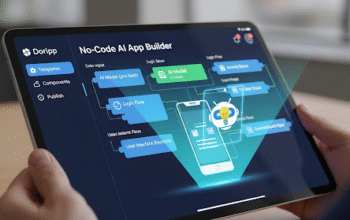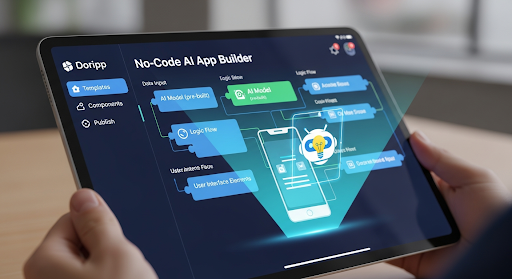Welcome to the ultimate guide for mastering the art of animation rigging for non-human characters! Whether you’re a seasoned animator looking to level up your skills or a beginner eager to dive into the world of character rigging, this comprehensive guide has got you covered. From creating custom skeletons to fine-tuning controls, we’ll walk you through everything you need to know to bring your non-human characters to life with fluid and realistic movements. So grab your favourite beverage, settle in, and let’s embark on this exciting journey together!
Introduction to Animation Rigging
Animation rigging is the process of creating a digital skeleton for characters and objects in 3D animation. It involves setting up a system of joints, controls, and constraints that allow for realistic movement and manipulation of the character’s body or object’s structure.
Rigging is an essential aspect of 3D animation as it enables animators to bring life to their creations. Without proper rigging, characters would look stiff and unnatural, hindering the storytelling aspect of animation.
In this section, we will delve into the basics of animation rigging, including its purpose, key components, and techniques used in rigging non-human characters.
Purpose of Animation Rigging
The primary purpose of animation rigging is to give animators control over how a character or object moves within a 3D environment. A well-rigged character allows for smooth and realistic movements that enhance the believability of the animation.
Furthermore, rigging also plays a crucial role in streamlining the animation process. Instead of manually manipulating each element frame by frame, animators can use pre-set controls to achieve desired movements quickly.
Key Components of an Animation Rig
An animation rig typically consists of three main components: joints, controls, and constraints.
Joints are essentially points where different parts of a character or object connect. These joints act as pivot points that enable movement within certain limitations set by controls and constraints.
Controls are user-friendly interface elements such as sliders or buttons that allow animators to manipulate different parts of the character’s body or object’s structure effectively. They provide a simpler way for animators to pose their characters without having to deal directly with complex joint systems.
Constraints are rules that limit or restrict certain movements within an animation rig. For example, a constraint may be applied to ensure that when one part moves in one direction; another part follows accordingly.
Animation Rigging Techniques for Non-Human Characters
When rigging non-human characters, such as animals or fantastical creatures, animators often need to employ different techniques to achieve the desired movement and appearance.
One such technique is inverse kinematics (IK), where the movement of one part of a character’s body affects the positioning of other connected parts. Another technique commonly used is blend shapes, which enable animators to create facial expressions by morphing different sculpted poses.
Other techniques that may be used include spline IK, which allows for smoother movements, and dynamic simulations for objects with more fluid motion like hair or clothing.
Animation rigging is an essential aspect of 3D animation that enables animators to bring their creations to life. It provides control and flexibility in achieving realistic movement and streamlines the animation process. In the next section, we will dive deeper into the process of rigging non-human characters and explore tips and tricks for mastering this art form.
Understanding the Basics of Rigging for Non-Human Characters
Rigging is an essential part of the animation process, especially when it comes to non-human characters. It involves creating a digital skeleton or structure that enables animators to manipulate and animate 3D objects in a virtual environment. In simpler terms, rigging makes it possible for non-human characters to move realistically on screen.
The process of rigging may seem daunting at first, but with a thorough understanding of its basics, you can master the art of animation rigging for non-human characters. In this section, we will cover some key concepts and techniques that are crucial for riggers working with non-human characters.
1. Understanding Hierarchies: In rigging, hierarchies refer to the relationship between different parts or components of a character’s body. These relationships define how each part moves in relation to others. For example, in a human character’s hierarchy, the arms are connected to the shoulders, and any movement of the shoulders will affect how the arms move as well.
For non-human characters such as animals or robots, their hierarchies may differ based on their unique anatomy and design. It is important to understand these hierarchies before starting the rigging process.
2. Creating Control Systems: Control systems are used by animators to manipulate various parts of a character’s body during animation. They can be simple or complex depending on the needs of your project. While creating control systems for human characters may involve using familiar joint-based rigs (such as IK/FK), non-human characters often require more customised control systems tailored specifically to their design.
3. Adding Deformers: Deformers are tools used in rigging that allow animators to deform an object’s shape without altering its underlying geometry. For example, if you want your character’s muscles or fat rolls to jiggle during movement, deformers would be used instead of physically manipulating the character’s mesh. Non-human characters may require different types of deformers depending on their unique features and movement requirements.
4. Weight Painting: Weight painting is a vital step in rigging that involves assigning specific parts of a character’s body to different joints or control systems. This process ensures that when certain controls are manipulated, they only affect the intended areas and not others. For non-human characters with complex shapes or exaggerated proportions, weight painting can be a challenging but crucial step in achieving natural-looking movements.
Understanding these fundamental aspects of rigging for non-human characters is essential for creating realistic and believable animations. Remember to always study your character’s anatomy and design before rigging, as it will greatly influence your approach and techniques throughout the process. With practice and patience, you can master the art of animation rigging for non-human characters and bring them to life on screen.
Types of Non-Human Characters and Their Unique Rigging Challenges
When it comes to animation rigging for non-human characters, there are various types of characters that animators may encounter. Each type of character presents unique challenges when it comes to rigging and requires different techniques and approaches. In this section, we will explore the different types of non-human characters and the specific rigging challenges they pose.
1. Quadrupeds:
Quadrupeds, or four-legged animals, are one of the most common types of non-human characters in animation. They include creatures such as dogs, horses, tigers, and many more. The main challenge in rigging quadrupeds is creating a believable movement for their four limbs. Unlike bipedal characters that have only two legs to deal with, quadrupeds require careful attention to each leg’s movement while maintaining overall balance and coordination.
To overcome this challenge, animators often use inverse kinematics (IK) rigs for quadrupeds. This technique allows them to control all four limbs simultaneously by manipulating the position and orientation of a single controller.
2. Birds:
Birds are another commonly used type of non-human character in animations, especially in fantasy or sci-fi genres. Rigging bird wings can be quite challenging as they require complex movements involving feathers, bones, muscles, and joints. A key consideration in bird wing rigging is achieving natural-looking flapping motion while also allowing for other actions such as folding or spreading the wings.
To tackle these challenges effectively, animators use feather systems that simulate realistic feather movement based on wing interactions with air resistance and gravity forces.
3. Insects:
Insects might seem like simple creatures compared to others on this list; however,r their small size makes them particularly challenging to animate realistically. To create convincing movements for insects such as ants or spiders requires intricate rigging techniques that mimic their segmented bodies’ flexibility and range of motion.
One way animators achieve this is by using spline-based rigs, which allow for smooth and natural-looking bending and twisting of the segmented parts of an insect’s body.
4. Mythical Creatures:
Mythical creatures are a popular choice for non-human characters in animation, as they offer endless possibilities for creativity and imagination. However, rigging these characters can be quite challenging due to their unique anatomy and often exaggerated proportions.
To rig mythical creatures successfully, animators need to have a deep understanding of the character’s design and movement style. They may also use advanced techniques such as blend shapes or custom control rigs to achieve the desired look and movement.
Each type of non-human character presents its own set of challenges when it comes to rigging. To overcome them effectively, animators must have a strong grasp of their characters’ anatomy, behaviour, and desired movements. By utilising specialised techniques and tools specific to each type of character, animators can bring these non-human creatures to life on screen with believable and captivating movements.
Final Thoughts
Animation rigging for non-human characters may seem like a daunting task, but with practice and determination, anyone can become a master at it. The key is to understand the fundamentals of rigging and then apply them creatively to bring your character to life.
One important aspect to keep in mind while rigging non-human characters is their unique anatomy and movement patterns. Unlike human characters, animals or fantasy creatures have different body structures, joints, and proportions that require careful consideration while creating a rig. It is crucial to study the anatomy of your character thoroughly before beginning the rigging process. This will help you create efficient controls that mimic their natural movements realistically.
Another important factor is planning and organisation. As mentioned earlier, animation rigs can quickly become complex, especially for non-human characters with multiple limbs or appendages. Hence, it is essential to plan out your rig beforehand and organise it in a clean and systematic manner. This will not only make animation easier but also save time in troubleshooting any issues that may arise.
In addition to technical skills, having a solid understanding of animation principles is crucial for successful rigging. Knowing how different body parts move in relation to each other and how weight affects movement plays a significant role in making your character’s animations look believable.
Moreover, do not be afraid to experiment with different techniques or tools while rigging. Every artist has their own unique style and approach towards animation rigging. Trying out new methods can not only help you improve your skills but also add more depth and personality to your character’s movements.
Always remember that mastering animation rigging for non-human characters takes time and patience. Do not get discouraged if things do not work out perfectly on the first try – keep practising! With dedication and persistence, you will eventually achieve mastery over this art form.
Animation rigging for non-human characters requires a combination of technical knowledge, creative thinking, and patience. By understanding the fundamentals, planning meticulously, and continuously honing your skills, you can create dynamic and compelling animations for any non-human character. So go ahead and let your imagination run wild – the possibilities are endless!











